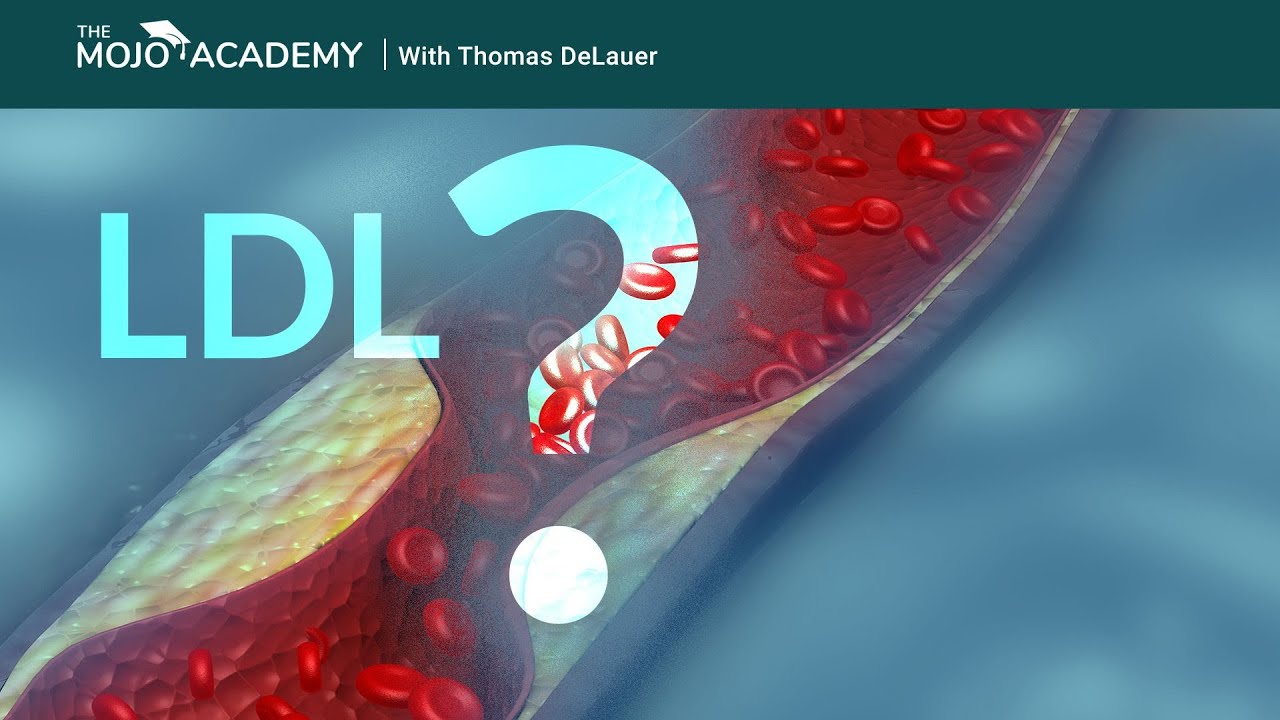What Is Oxidized LDL Cholesterol?
What is oxidized LDL cholesterol? Okay, we hear about HDL cholesterol, the good cholesterol, we hear about LDL, the bad cholesterol, but now we hear talk of oxidized LDL. Well, it’s actually something very, very important, and when you’re on a ketogenic diet, it probably becomes the most important thing when it comes down to your overall cholesterol levels. You see, you might be someone that goes to the doctor and sees that your cholesterol levels are high. We’ve done videos talking about that before, and we kind of understand the mix and match and how the body utilizes cholesterol and how the body moves fats and stuff like that, but what about if we start diving a little bit deeper into the different kinds of cholesterol? I’m Thomas DeLauer with Keto-Mojo, and I’m going to explain how insulin and sugar actually effects bad cholesterol, which is actually not that bad, and truly makes it bad.
HDL vs. LDL
You see, you have to think of it sort of like Star Wars, okay, cholesterol is really not that bad, and HDL and LDL are both equally good. I know there’s talk out there that says LDL is bad, but it’s kind of old stuff. The reality is HDL is just as necessary as LDL, and LDL is just as necessary as HDL. LDL only becomes bad if it turns to the dark side. And the only way that LDL turns to the dark side is if it’s acted upon by sugar. You see, LDL cholesterol is not really a cholesterol. LDL is a lipoprotein that carries cholesterol to the cell. So it’s like a boat, okay, think of a boat. This boat is carrying cholesterol, the cholesterol doesn’t really like water, so it needs a boat. Okay, so don’t get mad at the boat, the boat’s not doing anything wrong, the cholesterol’s just doing its job and the boat’s just doing its job, it’s like getting mad at the mailman because the mailman delivers a package that you don’t want.
Okay, don’t get mad at the LDL. Now LDL can turn bad if it gets acted upon by sugar. Well if Darth Vader convinced the mailman to become bad, well, and the mailman started delivering packages that he shouldn’t deliver, and mean things, and nasty things, well then the mailman might be bad, right? So LDL, when its doing its natural innocent thing, isn’t bad, but what happens through a process called glycation, when LDL combines with sugar in the blood, it creates what’s called a small, dense, LDL. So normally LDL is a boat that can go and gently dock wherever it needs to dock. The dock would just accept the boat. But when it’s a small, dense LDL, it’s become adulterated and is changed. Now it cannot dock anymore because it doesn’t fit, it’s now a square peg in a round hole, and it just doesn’t fit. So you end up having a bunch of this and that ends up pooling around in the blood and that attaches to the arterial wall, and that is what triggers the plaque to form, okay? It’s that that triggers the plaque, not just LDL.
Testing with Your Keto-Mojo Meter
So when you’re on a ketogenic diet and you’re testing your ketones, and you’re using your Mojo Meter and you see that your ketones are elevated, you really don’t have to be too concerned if your LDL’s elevated because that means that you don’t have sugar in the equation. Okay, remember LDL turns bad if it’s combined with sugar. So if you’re testing your ketones and you see that your ketones are high, that’s a good indicator of course that your sugar is low. Which means that if you get your lab work back and your LDL is somewhat high, but you know your ketones are high, then you can safely assume that your LDL is probably not the small, dense LDL. It’s probably the normal, fluffy LDL that’s just doing its innocent job. It’s the normal, healthy, happy mailman delivering much needed mail. It is not the mailman that’s gone to the dark side.
So this is the simple process of oxidized LDL. Now just a quick hot tip if you wanted to go to the doctor and test out some of these things, you could ask for a lipid panel with what is called fractionation. Basically all this is is a cholesterol panel that’s been broken down more so in the oxidized cholesterol, oxidized LDL, all these different things that might help you out a bit more. And in my humble opinion, anyone that is doing a ketogenic diet should get a lipid panel with fractionation, because it’s the only way that you can truly tell, because the LDL number could be super high, but it could be normally that high when your body is utilizing these fats. And remember, when you are using fats for fuel, your body is going to have more cholesterol, it’s a simple process that is just going to occur. So as always, make sure you’re keeping it locked in here with Keto-Mojo. Make sure that you’re leaving the guesswork out of the equation, and leaving the measuring to the meter. So you can truly know when you’re in ketosis, and living that good life. I’ll see you soon.




